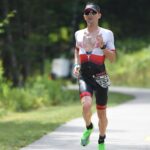A paradigm shift is underway in our comprehension of the aging process. While many accept the notion that aging inevitably brings physical decline, recent insights challenge this assumption. For years, the conventional wisdom held that after the age of 25, individuals experience an annual 1% decline in aerobic capacity (VO2 Max), strength, speed, and various physical attributes. However, emerging evidence suggests that this decline may not be an immutable fate, particularly for those who continue rigorous training at a competitive level.
Dr. Michael Pollock’s study of 24 healthy, active men, conducted over a ten-year period, is a notable example. These men, initially champion Master athletes in their 40s, demonstrated significantly less aging-related deterioration when they continued rigorous training. Contrary to the conventional 1%-per-year rule, those who sustained high-level competition training maintained their oxygen consumption ability; their VO2 Max barely declined. In contrast, those who let training intensity wane experienced a notable 12.5% decline in VO2 Max over the same period.
Support for Pollock’s findings grows each year, emphasizing the pivotal role of intense training in defying the aging process. Noteworthy is a study of male competitive swimmers over 15 years, as highlighted by Richard Winett, Ph.D., editor of Master Trainer newsletter. Phil Whitten, Ph.D., reported in Swim that regular and competitive swimming significantly alters the trajectory of physical decline. For these swimmers, decline doesn’t commence at 25 but in the mid-30s, with a mere 3.5% decline by age 50 and 19.1% by age 75. This contrasts starkly with the 25% decline by age 50 and 50% by age 75 for those leading sedentary lifestyles.
“For scientists studying the aging process, Masters swimming provides a natural laboratory with tens of thousands of subjects,” wrote Phil Whitten.
Whitten contends that Masters swimmers, often constrained by family and job commitments, could achieve even more remarkable results with greater training dedication. This echoes Pollock’s belief that maintaining peak performance with age hinges on never allowing oneself to fall out of condition.
In this light, the much-discussed comeback attempt by swimmer Mark Spitz serves as a cautionary tale. Spitz’s 16-year hiatus from training after his 1972 Olympic success likely contributed more to his unsuccessful return than age did, according to Whitten. The study suggests that Spitz, at 42, could have outpaced his own world record if he had consistently maintained his training regimen.
These findings underscore the extraordinary potential of disciplined training to reshape our understanding of physical decline, providing compelling evidence that active, competitive engagement can significantly mitigate the effects of aging.
In a personal testament to these principles, since my retirement from professional racing in 2013, my consistent and rigorous training routine—comprising cycling (4-5 times a week throughout the year, including hilly rides, long climbs, short intervals, and hard and social group rides), free weights at home, core & stretching workouts, the occasional swimming, daily walks, and hiking—has yielded results consistent with Whitten’s findings. Coupled with a clean diet and regular, ample sleep (averaging 8 hours a day), I feel energized, strong, healthy and maintained my body shape. Recent powermeter and blood lactate testing reveal still impressive data for my age (49 years and 11 months as of this writing): a VO2max power of 420w (5.7w/kg) and LT1 (2.0mml/lac) at 300w.
I know that people are eager for information like this too, yearning for answers to their questions about how to become healthier (physical & mental), stronger, fitter looking, loss fat, diet, having more energy… There’s a genuine need for comprehensive insights, coupled with the motivation and encouragement to embark on a transformative journey toward a healthier, more resilient life.




